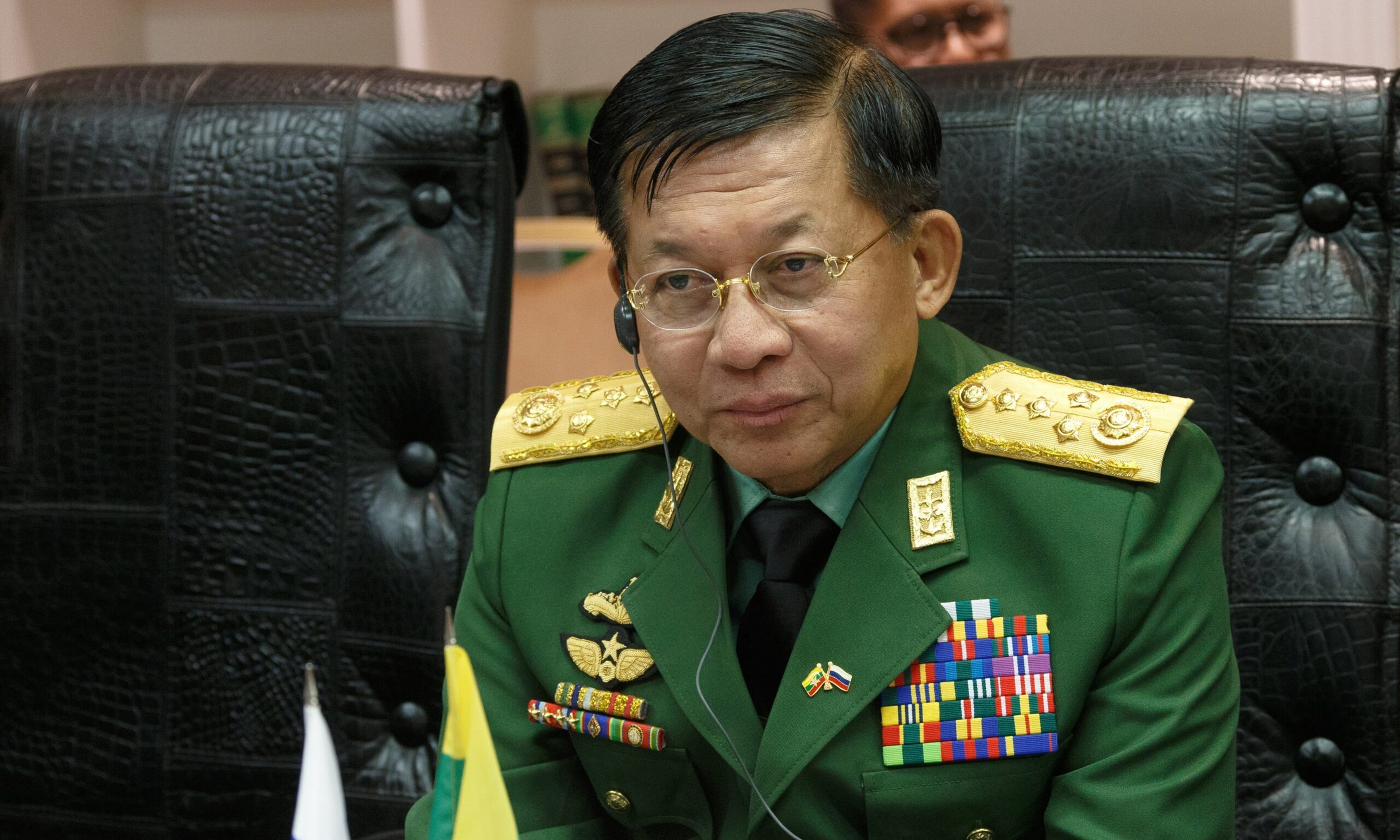China’s Involvement in Myanmar Amid Deepening Ties between China and ASEAN Countries

From access to the Indian Ocean, Myanmar’s oil and gas supplies, and rare earth reserves to managing stability on the shared border, Myanmar is a strategically important neighbor for China. The internal situation in the country therefore directly affects Beijing’s geopolitical and security interests in the Asia-Pacific region, including ties with ASEAN.
This article is part of a series of articles authored by young, aspiring China scholars under the Future CHOICE initiative.
“Close Neighbors Linked by Mountains and Rivers”
In early May 2023, the then-Chinese Foreign Minister, Qin Gang, held a meeting with Myanmar’s top general Min Aung Hlaing in the capital of Myanmar Naypyidaw. According to Nikkei, by not referring to Min Aung Hlaing by his official title, China has clearly not yet officially recognized the change of government that came to power after a February 2021 coup. Nevertheless, during the meeting, Qin expressed appreciation for the “friendship” between the two nations and emphasized the commitment to enhance their bilateral relations. The meeting marked the highest-level encounter between a Chinese official and Myanmar’s leadership since the military coup.
Qin Gang also made a visit to the China-Myanmar border area and stressed the need to “maintain the stability at the China-Myanmar border, advance the friendship and cooperation between China and Myanmar, and open up new prospects of border-related and Myanmar-related work. ”
The Chinese foreign minister urged the junta leader to address the issue of crime along their shared border. China openly expressed its condemnation of the situation, emphasizing that there was considerable harm to the Chinese population from criminal activities that involve human trafficking, drug smuggling and cyberscams.
The border region has long been plagued by armed conflict and is the epicenter of a vast drug trafficking network worth billions of dollars. Despite its stated policy of non-interference in internal affairs, China has engaged with various parties of the ongoing civil conflict in Myanmar, as China not only supports the military junta but also provides support to certain ethnic armies, including the United Wa State Army (UWSA), one of the largest non-state armed groups in the Southeast Asia region. By supporting conflict’s various parties, it is prolonging the outgoing conflict, as well as gaining distrust of the junta.
Despite the visible tensions, the visit of Qin Gang signaled a continuing shift in China’s approach to the junta government, as senior Chinese officials exhibited hesitancy in engaging with the junta’s top leadership before.
China has struggled to adapt to the post-coup situation in Myanmar, as it enjoyed good relations with the previously ruling National League for Democracy (NLD) party led by Nobel Peace Prize laureate Aung San Suu Kyi. China supported the NLD government on the international front and avoided joining international condemnation of Myanmar after a series of persecutions and killings of the Muslim Rohingya people by the military between 2016 and 2017. These abuses, referred to by some as “ethnic cleansing”, resulted in more than one million Rohingya seeking refuge in Bangladesh and other countries in the region. In turn, after the coup, China backed a UN statement condemning “the violence against peaceful protests” by the junta.
China’s Economic Interests in Myanmar
China has considerable geo-economic and business interests in the country that have been affected by the volatile domestic situation.
In the commemoration of the 70th anniversary of the establishment of relations between China and Myanmar President Xi Jinping himself paid a state visit to Myanmar in January 2020, the first by a Chinese president in 19 years. Both sides agreed to accelerate the alignment of development strategies and effectively construct the China-Myanmar Economic Corridor (CMEC).
This corridor, which is a key bilateral cooperation project under the Belt and Road Initiative, mainly consists of railways, industrial and power projects, and trade agreements. The CMEC was first introduced by Chinese Foreign Minister, Wang Yi, during his state visit to Myanmar in November 2017. This Y-shaped project corridor links Kunming, Yunnan Province, to Myanmar’s west coast, thus enabling China’s access to the Indian Ocean.
The CMEC will help decrease China’s reliance on the Straits of Malacca and the South China Sea, thereby reducing its susceptibility to potential disruptions of oil imports and trade caused by adversarial forces during times of conflict, while strengthening China’s presence in the Indian Ocean. The success of the project goes hand in hand with China’s necessity to maintain stability along its borders with Myanmar.
ASEAN’s Peace Plan and the Role of China
Based on the close relationship with the NLD government before the coup, China hoped that Myanmar would become a mediator in China-ASEAN relations. The grouping of South East Asian nations that includes Myanmar overtook both the United States and the European Union to become China’s largest trading partner for the first time during the COVID-19 pandemic in 2020, while China has maintained its role as the grouping’s top trading partner since 2009. ASEAN has thus become increasingly pivotal to China’s regional and global foreign policy objectives. However, the coup and the ensuing isolation of Myanmar within the ASEAN have largely put an end to China’s hopes.
China has repeatedly called for a local solution and criticized any US involvement in the peace process in Myanmar, preferring ASEAN’s leading role in mediation. In April 2021, Chinese Foreign Minister Wang Yi warned ASEAN member states to be “alert to some external forces infiltrating Myanmar with ulterior motives” as the military junta faces rising international pressure. At the same time, China has not fully stepped into trying to mediate the end of the internal conflict in Myanmar, despite some of its recent overtures in terms of global conflict resolution efforts, such as on the Iran-Saudi Arabia normalization.
Although ASEAN has a policy of non-interference in the affairs of its members, it has repeatedly urged the Myanmar junta to implement a Five-Point Consensus peace plan signed by the junta leader Senior General Min Aung Hlaing and the leaders of the other ASEAN member states at the Jakarta meeting which was held in April 2021, just two months after the military coup.
The peace plan called for an immediate cessation of all violence in Myanmar and seeks a peaceful solution through constructive dialogue among all parties concerned. A special envoy from the ASEAN chair, assisted by the ASEAN secretary-general, would facilitate the dialogue. ASEAN would provide humanitarian assistance and the Special envoy and delegation would visit Myanmar to meet with all parties concerned. The junta leaders of Myanmar are currently prohibited from participating in high-level meetings until they implement the Five-Point Consensus.
At their last summit in May 2023, ASEAN leaders once again stressed out the necessity for an immediate end to violence in Myanmar, proposing a peaceful solution to the conflict and the delivery of humanitarian aid.
Way Forward
The junta in Myanmar had initially promised to hold elections in August this year to legitimize its rule. However, the government decided to postpone the election due to the extension of the state of emergency.
After failing to meet the election registration deadline, the junta dissolved the NLD and 39 other political parties. Many of these parties, including the NLD, were either unwilling or unable to participate in the registration process. This makes it almost certain that the Union Solidarity and Development Party (USDP), essentially the military’s proxy, will win.
After postponing the election, the junta granted amnesty to Aung San Suu Kyi, who was arrested immediately after the military coup and sentenced to 33 years in prison for corruption and other alleged crimes. The move appears to be another gesture to defuse popular opposition to the repressive regime and reduce international scrutiny.
The apparent concessions by the junta are also partly driven by an effort to ease the country’s economic difficulties. The mismanagement of the financial sector and poor infrastructure, including a woefully inadequate electricity supply, are deterring foreign capital. Foreign direct investment in Myanmar fell by more than 60 percent year-on-year to about US$467 million between April 1 and July 31, according to figures released by the Directorate of Investment and Company Administration (DICA).
China is currently the second largest foreign investor in Myanmar after Singapore and the junta is also trying to attract more Chinese capital. However, Chinese projects in the country have long faced public dissatisfaction, as they have often been seen as not contributing to local development and having a negative impact on residents.
Additionally, because of the junta’s poor management of the financial sector, the military government is reportedly having difficulty repaying dollar-denominated loans from the Export-Import Bank of China, China’s state-owned development bank, in part because of the devaluation of the kyat.
In any case, Myanmar’s domestic instability and the junta’s mismanagement are putting a shadow of doubt over the prospects of Chinese economic ventures in the country. Moreover, association with the military government, which China seems to be increasingly open to engaging with, may sour the public views of China and can create a headache for Beijing should the government change again. China thus faces a difficult conundrum in Myanmar, underscoring the complexity of China’s regional engagement.
Written by
Tereza Štilipová
Tereza Štilipová is an intern at China Observers in Central and Eastern Europe (CHOICE) and MapInfluenCE projects.


